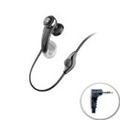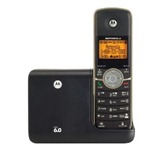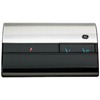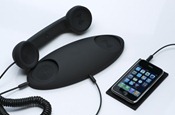The recent World Health Organization report saying that cell phone radiation is “possibly carcinogenic” has caused a bit of a stir.
On one end of the spectrum, the report itself categorizes cell phones alongside DDT and car exhaust in terms of potential risk while on the other end, the wireless association, CTIA, says that the “classification does not mean cellphones cause cancer” and points to statements by both the FCC and FDA to back up its claims.
Whatever the case, the whole cellphones-cause-cancer idea isn’t a new one by any stretch of the imagination and it’s not a bad time to visit (or revisit) ways to use your phone without actually touching it to your head. I’ve been fielding a fair number of questions from friends, family and colleagues about ways to do this—many of them being along the lines of whether Bluetooth earpieces are any safer—and here are some of my thoughts.
Bluetooth: Is it safe?
 Most wireless headset accessories use the Bluetooth standard. Bluetooth is a wireless technology that creates what’s known as a personal area network, or PAN, with a range of about 30 feet.
Most wireless headset accessories use the Bluetooth standard. Bluetooth is a wireless technology that creates what’s known as a personal area network, or PAN, with a range of about 30 feet.
The official Bluetooth industry group contends that Bluetooth is perfectly safe, which shouldn’t come as a surprise, and even goes as far as recommending Bluetooth headsets “to mitigate potential cell phone cancer risks.” The group cites the following recommendation from the American Cancer Society:
“Studies now under way should give a clearer picture of the possible health effects of cell phone use in the future. Until then, there are several things that people who are concerned about RF waves can do to limit their exposure.
Use a hands-free device such as a corded or cordless earpiece. Using an earpiece moves the antenna away from the user’s head, which decreases the amount of RF waves that reach the head. Corded earpieces emit virtually 0 RF waves (although the phone itself still emits small amounts of RF waves that can reach parts of the body if close enough, such as on the waist or in a pocket). Bluetooth earpieces have an SAR value of around 0.001 watts/kg (less than one thousandth the SAR limit for cell phones as set by the FDA and FCC).”
The big takeaway? We’re not really sure how dangerous cellphones are but if you’re concerned about it, using a Bluetooth headset may be considered a safer alternative. That being said, Bluetooth still uses wireless signals and you’re sticking a wireless-signal-using device inside your ear.
There are good alternatives other than Bluetooth earpieces as well, though.
Wired earpieces
 Cellphones used to ship with wired earpieces all the time, but they’re now becoming more and more of a rarity. They can be purchased for well under $10, though, and there are hundreds, if not thousands, of options.
Cellphones used to ship with wired earpieces all the time, but they’re now becoming more and more of a rarity. They can be purchased for well under $10, though, and there are hundreds, if not thousands, of options.
I actually prefer wired earpieces over Bluetooth earpieces. There’s no setup involved, no need to worry about battery levels, and they’re cheaper. They can get all tangled up, though, so there’s that.
Speakerphone
Using your cellphone’s speakerphone feature is another option, of course. Any modern phone should have this feature and most of them work decently enough, but just like with any speakerphone—wireless or otherwise—you run the risk of sounding like you’re in a fishbowl and it’s not ideal when you’re around people who don’t feel like listening to your riveting conversations.
Call forwarding
If you have a landline phone, I think that forwarding your cell phone calls to it is a great option. You still use your cell minutes in most cases, which stings a bit, but call quality can be significantly better.
Check with your carrier to see how to enable call forwarding on your phone. Here are the links for the big four:
AT&T | Sprint | T-Mobile | Verizon
Several smartphones have call forwarding features built into their settings menus, too, so check the user manual for your phone. Assuming you’ve misplaced your manual, as everyone does, you can look it up here.
Cell-to-landline kits
 Another decent option is to use your cellphone’s Bluetooth feature to connect it to a compatible landline phone. When someone calls your cellphone, you’ll be able to take the call on your landline phone.
Another decent option is to use your cellphone’s Bluetooth feature to connect it to a compatible landline phone. When someone calls your cellphone, you’ll be able to take the call on your landline phone.
It’s similar to the call forwarding feature mentioned above but you can use it conditionally—when you’re within range of your landline phone, you’ll be able to take calls on it but when you leave your home or office, your cellphone will take calls normally.
 You can purchase a Bluetooth enabled landline phone—the Motorola one pictured above costs $40—or you can purchase what’s called a Bluetooth gateway (pictured on the left), which will work with any existing landline phone you have. Search for “DECT Bluetooth” or “Bluetooth gateway” while shopping around online for more options.
You can purchase a Bluetooth enabled landline phone—the Motorola one pictured above costs $40—or you can purchase what’s called a Bluetooth gateway (pictured on the left), which will work with any existing landline phone you have. Search for “DECT Bluetooth” or “Bluetooth gateway” while shopping around online for more options.
Cell-as-landline kits
 And last but not least, a low-tech but very usable solution can be found in the form of accessories that let you use your cellphone just like you’d use a landline phone.
And last but not least, a low-tech but very usable solution can be found in the form of accessories that let you use your cellphone just like you’d use a landline phone.
One of the more popular companies, Native Union, makes these “Moshi Moshi Retro Handsets” that basically function like a big wired earpieces in the form of landline handsets.
They work with any phone that has a headset jack (all of them) and require minimal setup. They’re a little on the expensive side ($60) but you’re paying more for the style than anything else. Here’s a video I made a little over a year ago demonstrating how they work.
More on TIME.com:
5 Easy Ways to Reduce Your Cell Phone Exposure

